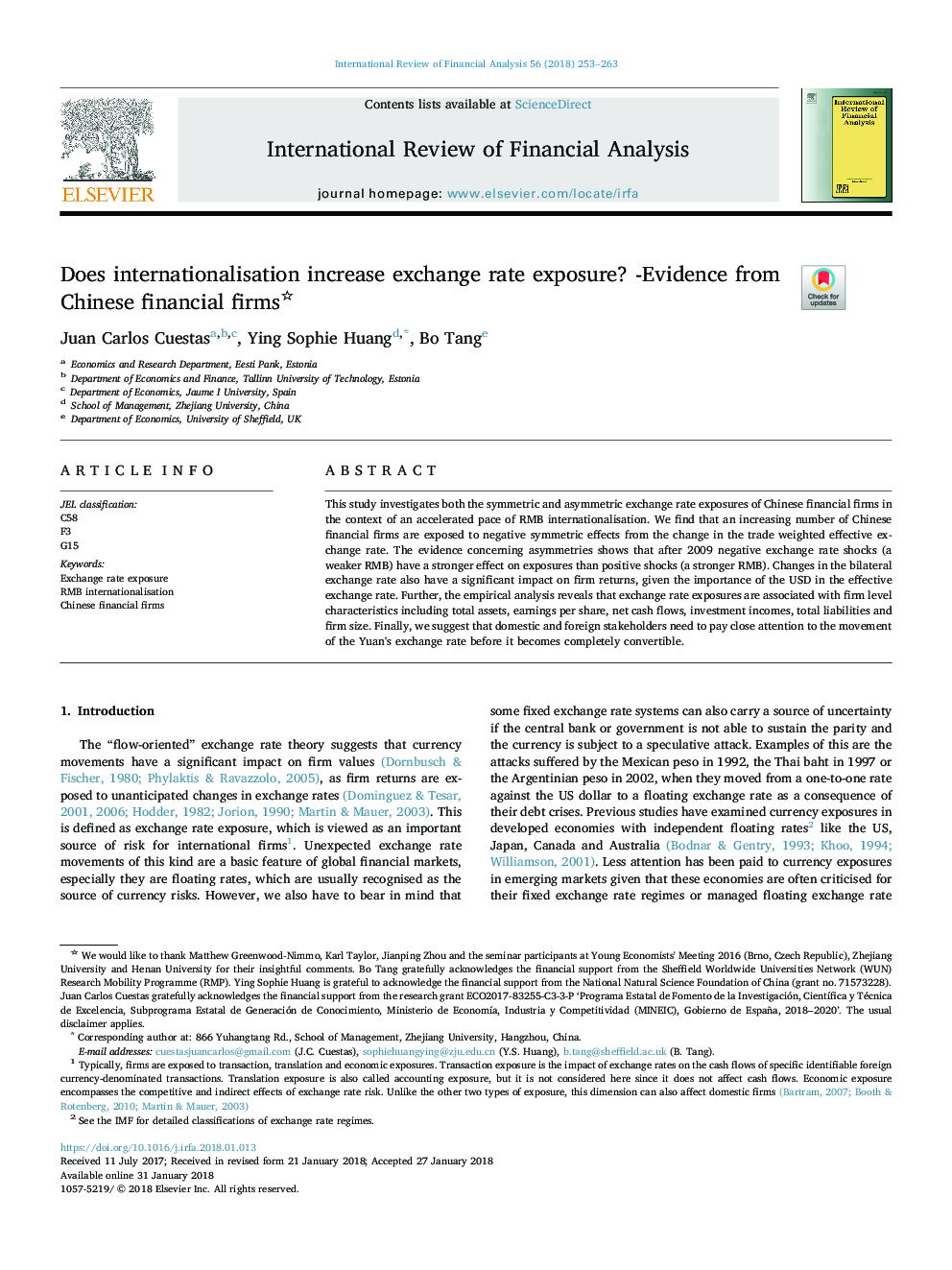| Article ID | Journal | Published Year | Pages | File Type |
|---|---|---|---|---|
| 7355769 | International Review of Financial Analysis | 2018 | 11 Pages |
Abstract
This study investigates both the symmetric and asymmetric exchange rate exposures of Chinese financial firms in the context of an accelerated pace of RMB internationalisation. We find that an increasing number of Chinese financial firms are exposed to negative symmetric effects from the change in the trade weighted effective exchange rate. The evidence concerning asymmetries shows that after 2009 negative exchange rate shocks (a weaker RMB) have a stronger effect on exposures than positive shocks (a stronger RMB). Changes in the bilateral exchange rate also have a significant impact on firm returns, given the importance of the USD in the effective exchange rate. Further, the empirical analysis reveals that exchange rate exposures are associated with firm level characteristics including total assets, earnings per share, net cash flows, investment incomes, total liabilities and firm size. Finally, we suggest that domestic and foreign stakeholders need to pay close attention to the movement of the Yuan's exchange rate before it becomes completely convertible.
Keywords
Related Topics
Social Sciences and Humanities
Economics, Econometrics and Finance
Economics and Econometrics
Authors
Juan Carlos Cuestas, Ying Sophie Huang, Bo Tang,
